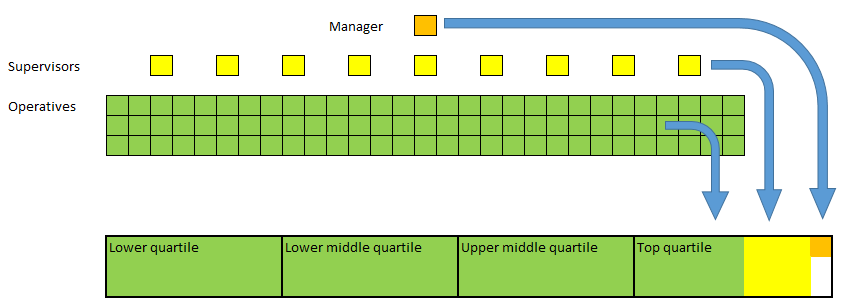It feels funny giving an opinion on things like the gender pay gap right now! And while I'd be the last to suggest that this is a high priority with everything else that's going on, I do think it would have been preferable for the government to have extended the submission deadline rather than say that there is no expectation on employers to report their data.
So, at today's date, the first working day after the formal deadline for a process that began a couple of years ago, less than half of all companies and organisations required to make a submission have done. So there's little point in looking at the fine detail and making year on year comparisons. Only 36% of logistics companies which previously made a submission have done so, but you'll probably be surprised to hear me say this - just a personal view, I don't think it matters a huge amount. Do read on!
The calculations required to be reported by the government, while hugely useful in that they create a focus and promote discussion, don't work particular well for logistics. Our pay gap tends not to look too bad - there are comparatively few women in the sector, but the sheer number of 'active' workers that we have means that the median man and the median woman are quite likely to be in similar operational roles with specified hourly rates that are legally not allowed to differ - for example, warehouseman versus warehousewoman.
With the reading and analysis I've done in this area, I've become more and more convinced that logistics needs to recognise and rectify its 'leadership diversity deficit' - not because it's nice, not because it's fair, but because diversity is provably good for business. I've also become more and more convinced that the leadership diversity deficit, more than the gender pay gap per se, is the real issue for our sector.
Looking at the quartile calculations, whereas over 39% of companies have more than 50% females in the top quartile, that only includes one 'logistics' company, a wholesaler - I'm not saying that more than 50% of directors being female is good, I'm just saying that logistics is out of step. One reason is that the quartile calculations required by the government are not nuanced enough for logistics. Our pyramid structures means that there will probably be hourly paid staff, for instance drivers, in the top quartile - not because they are so well paid, but again because of the size of the largely male 'doing' bit of the employee base. Have a look at the graphic below, and you'll see what I mean. So, examining what is happening at director level and in senior management would be more useful...
As usual, at the end of last year, the Motor Transport Top 100 came out, revealing an average pre-tax profit of just 2.2% across the top 100 road freight companies. The Knowledge Centre at CILT's HO in Corby has access to the FAME database and 8% is more of a norm for other sectors. Meanwhile, the FAME database also includes data on the gender of directors - for Transport the proportion of female directors was 20%, while for non-logistics sectors the average was 31%. I'd be the first to say that these figures are not all directly comparable, but we are a low margin sector and have low numbers of female executives - is it possible that the two go together?
